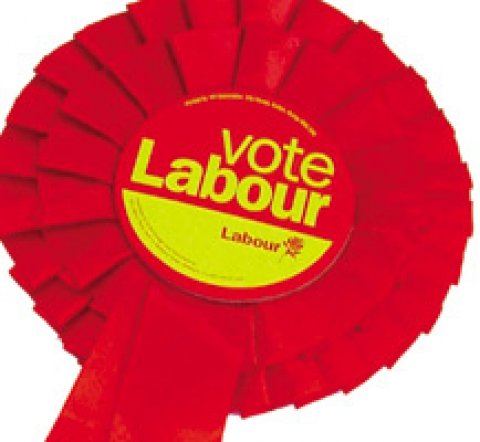
At the end of September and in March this year and December 2015 I reviewed Labour’ s performance in local council by-elections.
What’s happened on this front since the leadership election result and annual conference?
Here, in the same format as I presented them previously, is the change in Labour vote share in all the council by-elections where there has been a Labour candidate in the last two contests (so a comparison can be drawn) since annual conference. The results are grouped by region so you can see the pattern around the country.
As in my previous reviews there are stark regional variations.
Labour’s average vote share is improving strongly in London and to a lesser extent the North West, and marginally in the North and the single Yorkshire by-election i.e. in Labour’s historically strongest English regions, but is falling in the other seven nations and regions. The gap between the best performing and worst performing regions seems to have widened.
However, of a total of 68 by-elections during this period Labour’s vote share was down in 43 of the contests, which is broadly comparable to the pattern earlier this year.
Eastern (average Labour vote share down 9.1 per cent)
Bumpstead (Braintree)
Clarence (St Albans)
Haldens (Welwyn Hatfield)
Heacham (King’s Lynn)
Hitchin Oughton (North Hertfordshire) -17.4 per cent
Misterton (Harborough)
Moreton Hall (St Edmundsbury) -15.4 per cent
Witham North (Braintree)
East Midlands (average Labour vote share down 11.8 per cent)
Grange Park (South Northamptonshire) -3.5 per cent
Rothwell (Kettering)
Warsopp Carrs (Mansfield)
London (average Labour vote share up 8.9 per cent)
Brockley (Lewisham)
Eltham North (Greenwich)
Evelyn (Lewisham)
Hoxton West (Hackney)
Queenstown (Wandsworth)
St Ann’s (Haringey)
Whitechapel (Tower Hamlets) +6.5 per cent
North (average Labour vote share up 0.8 per cent)
Blakelaw (Newcastle-upon-Tyne)
Castle (Carlisle)
Central (Middlesbrough) +37.7 per cent
Headland & Harbour (Hartlepool) -17.7 per cent
North West (average Labour vote share up 4.7 per cent)
Burnley Central East (Lancashire) +10.7 per cent
Higher Croft (Blackburn) +12.1 per cent
Reedley (Pendle)
Rumworth (Bolton)
University & Scotforth Rural (Lancaster) -0.5 per cent
Westgate (Lancaster)
Scotland (average Labour vote share down 9.2 per cent)
Annadale North (Dumfries & Galloway) -8.2 per cent
Arbroath East (Angus) -6.0 per cent
Carnoustie (Angus)
Culloden and Ardersier (Highland) -9.4 per cent
Garscadden (Glasgow)
Inverurie (Aberdeenshire)
Leven, Kennoway & Largo (Fife) -6.9 per cent
South East (average Labour vote share down 1.1 per cent)
Basing (Basingstoke & Deane) -2 per cent
Central Sandhurst (Bracknell Forest) +10.5 per cent
Collington (Rother)
Darwell (Rother)
Fair Oak & Horton Heath (Eastleigh) -4.1 per cent
Kingswood with Burgh Heath (Reigate) -3.3 per cent
Limpsfield (Tandridge)
Rainham Central (Medway) -2.9 per cent
Southwater (Horsham)
Sovereign (Eastbourne)
Strood South (Medway)
Swanley (Kent)
Swanley Christchurch & Village (Sevenoaks) +2.3 per cent
Tadley South (Basingstoke & Deane) +1.5 per cent
Trench (Tunbridge Wells) +1.1 per cent
Valley (Tandridge)
South West (average Labour vote share down 6.4 per cent)
Abbey (Bath & North East Somerset) -4.9 per cent
Bovey (Teignbridge) -7.4 per cent
Chudleigh (Teignbridge) -8.8 per cent
Ferndown (Dorset)
Longlevens (Gloucester)
Turn Hill (South Somerset)
Wey Valley (Weymouth & Portland) -9.8 per cent
Wales (average Labour vote share down 8.6 per cent)
Abergele Pensarm (Conwy) -0.7 per cent
Gibbonsdown (Vale of Glamorgan) -2.2 per cent
Gilfach (Caerphilly)
Grangetown (Cardiff)
Rhyl West (Denbighshire)
Risca East (Caerphilly)
West Midlands (average Labour vote share down 7.5 per cent)
Horsehay & Lightmoor (Telford & Wrekin) +20.5 per cent
Madeley (Newcastle-under-Lyme) -35.5 per cent
Yorkshire & Humberside (average Labour vote share up 0.6 per cent)




More from LabourList
‘The Employment Rights Bill is a massive step forward – but we’re not done delivering for working people’
‘Britain’s G20 Presidency is Labour’s chance to lead a global reset’
Is Andy Burnham’s star dimming amid repeated hints at leadership ambition?